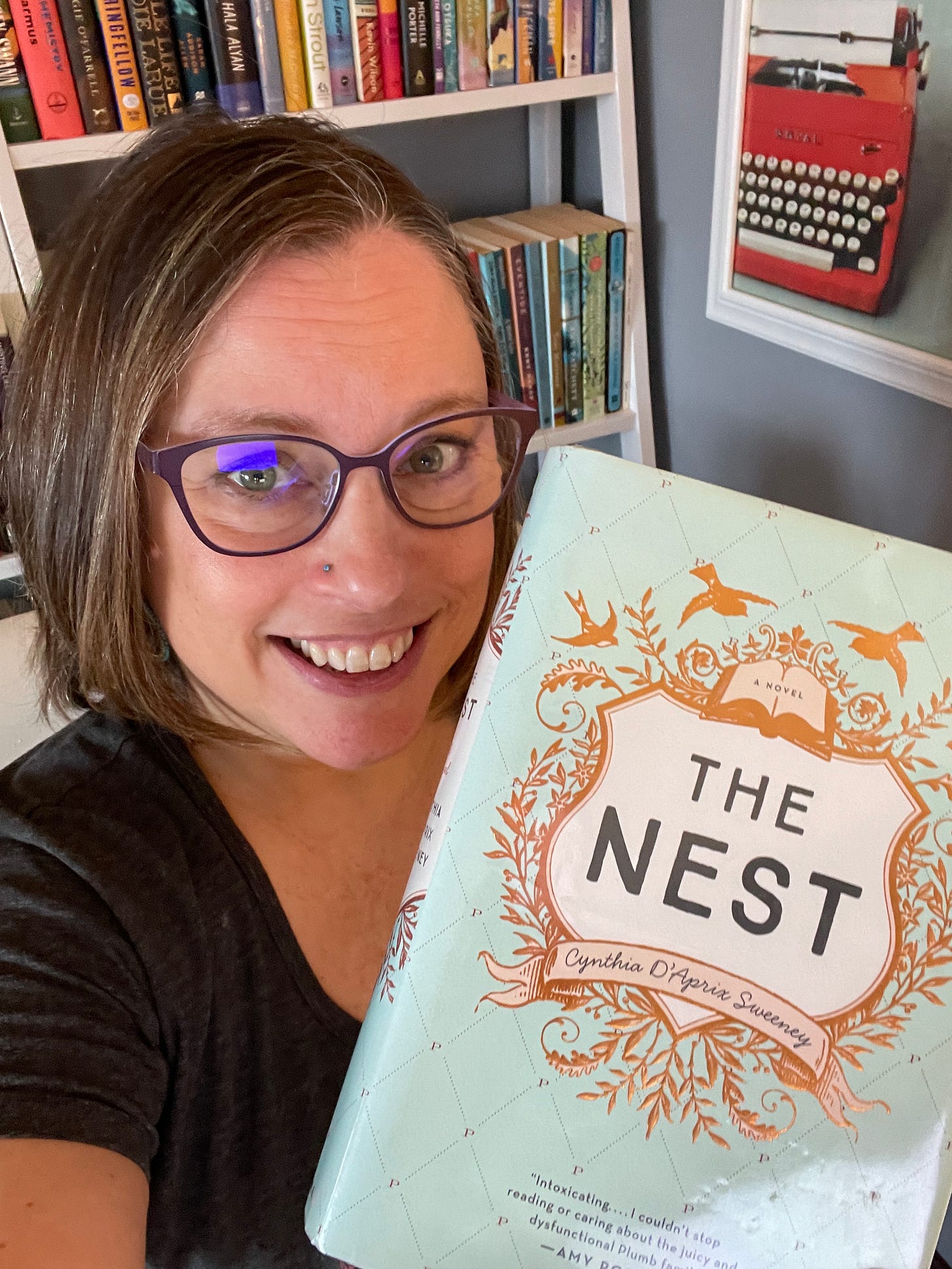
In the monthly Reading Like Writers Books Club, we are examining a published book-length story to excavate the three components of the “groundwork” we talk about around here.
Remember, reading like writers helps us become better writers. Come along, my friend!
Disclaimer #1: Spoilers are imminent. If you want to save this post for after you’ve read the book, please feel free! But much can be learned from a discussion of a story even if you haven’t read said story, so I encourage the rest of you to read on.
The Groundwork of a Story:
Message: what the author is trying to say to the reader about the human experience
Character Arc: how the character(s) change internally from the beginning to the end (usually related to the message)
Turning Points: 2-3 key plot points that affect this change in the character’s arc, and how.
October’s Read: The Nest, by Cynthia D’Aprix Sweeney
Full disclosure: I didn’t really enjoy this book. That said, the writing was good, and it is a solid narrative, so there are still things to be gleaned. (I’d love to hear your opinion in the comments!)
The Message
Disclaimer #2: authors can’t control what message a reader takes away from the story. Without talking with the author, there is no way to know what they actually intended! But this is my takeaway…
I think that Cynthia D’Aprix Sweeney was getting at something about taking control over our own lives and stepping into who we want to be. Each of the characters started out feeling very dependent in one way or another: dependent on a spouse, a parent, a sibling, and of course, The Nest. But by the end, most of them had stepped into their own integrity.
Leo is the exception to this, because he seemed to go in the opposite direction. My assumption is that she wrote him to be first the catalyst and then the darkness we could hold all of the other characters up against.
Character
There are several character POVs in this novel, so this time I’m just going to pick one to use as the example for a character arc: Melody.
Misbelief: In the beginning, Melody sees herself as the baby of the family, essentially developing a victim complex. How she views herself is entirely based on how she is seen by others. This also extends into how she parents her daughters: they are an extension of herself, and therefore they need to be perfect, too.
How it changes: By the end, Melody is taking some responsibility for her own life and stepping into acceptance and ownership of how things are, rather than trying to hold onto something that isn’t real. Letting go of The Nest is one part of this, as is loosening her tight grip on her daughters and her house.
Turning Points
There are many turning points in any novel. I’ve chosen a few to illustrate how plot events and character arcs are tied together.
When the siblings realize that their inheritances are all but gone while talking with their mother. While they have already had clues that this was the case, this is a moment where not only is it confirmed, but each sibling has a revelation about their own place in the family dynamic.
When Bea gave Leo her new manuscript. This was a moment where Bea stepped out of her own identity paralysis and back into that of a writer. It’s also a moment where we see Leo’s weakness on full display and realize that even though he’s not a bad person, he’s not going to make choices that benefit anyone else.
Melody’s birthday party. This is in many ways the climax of the story, where revelations are made that create moments-of-truth for much of the family. Melody has to face that she can’t control things, Jack has to face that he has been taking things in his life for granted, and they all realize that Leo has essentially run away, leaving them to pick up the pieces (which means that they are forced to learn the message of the novel, that they have to accept who they are and the lives they have created.)
Let’s discuss! What observations, A-Ha’s, or questions came up for you? Let us know in the comments!
🍁November’s Book:
Eleanor Oliphant is Completely Fine, by Gail Honeyman
Look for the Groundwork of the story:
Message: what the author is trying to say to the reader about the human experience
Character Arc: how the character(s) change internally from the beginning to the end (usually related to the message)
Turning Points: 2-3 key plot points that affect this change in the character’s arc, and how.
Happy reading!
Warmly,
Stephanie
P.S. I’ll be here when you’re ready. 🌻








